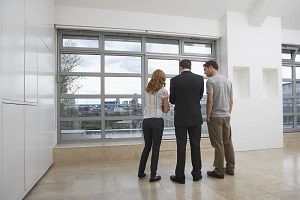As mental wellness has become a mainstream subject in recent years, more and more people are allocating living spaces at home for a dedicated meditation room.
It mostly used to be that homeowners who do plan for dedicated rooms to meditate actually use that space for an area of religious worship and veneration. Implying that the space would be used for prayers as well.
Now even free-thinkers find it desirable to setup their own space of zen. Many also choose to separate a religious room with altar from a room purely for meditation.
With the extremely fast-paced world we live in today, fused with the unforgiving notifications from social media, it’s no surprise at all that people are intuitively flocking to methods of relaxing their minds and thoughts. Then there is the group who don’t just seek clarity of awareness, but in spirituality and getting in touch with a higher power and their inner selves.
Planning a meditation room with feng shui
While a lot of mindfulness experts often discuss how to design a meditation room, the selection of a living area to use for such a purpose is often a topic that is seldom talked about.
One reason for this might be that most homeowners would feel that giving this room so much priority as to specially choose a space for it can be too much. They just don’t attempt astral projections as a hobby.
Household typically have residents take up the preferred bedrooms, then what is left of the house in terms of spaces will be used as a place to meditate. So there is not much planning or designing that can be done there.
But let’s say that you are planning the blueprints of a new house. Or you give your zen room top priority over everything else, even willing to sleep somewhere else and repurpose the master bedroom for a meditation room. Or by some divine coincidence, you have a few great areas at home to choose from.
Which area is the best, or most appropriate as a meditation room? Let’s have feng shui answer this question.
Firstly remember that in feng shui, we divide a house into 9 sectors consisting of the 8 directions plus the central palace. So choosing a space to locate the meditation space would be choosing one of these sectors.
Among the popular concepts of feng shui, we can use either 8 mansions feng shui or flying stars feng shui to identify the best locations. Or use both.
With 8 mansions, after determining the sitting of the property and generating the energy map, the sector that would be perfect for the zen area is Tian Yi (TY). Theoretically speaking, any of the 4 favorable sectors identified in 8 mansions can be acceptable. But the most appropriate one is TY which is the sacred space of divine healing.
For example, if your residence is sitting at the northwest, then it would have the below chart.
The northeast sector where TY is situated.
For those who share a worship room with a meditation room, then it might be suitable to use the 5 ghost (5G) sector. While most people avoid this sector like the plague, this energy is actually connected to divinity and the spiritual realm.
With flying stars feng shui, we should pay attention to locating a few types of star combinations. 2-6, 9-9, 1-9, and any of the hetu combination especially 2-7 and 4-9.
A meeting of star 2 and star 6 is a meeting of Kun and Chien. A come together of heaven and earth. This sets the ideal base for one to complete the cosmic trinity of heaven-earth-man to tap onto the wisdom of the cosmos.
While 2-6 is mostly used with intent, a 9-9 star combination draws on a natural affinity to spirituality. This means that 2-6 is like waking up in the morning and deciding to go to work, while 9-9 is like unknowingly going to work after waking up. Have you ever got in the driver seat and arrived at your destination without any recollection of the journey you just took? That’s 9-9 in terms of spirituality.
1-9 is a meeting of the white star 1 that is linked to wisdom and the purple star 9 which is associated with spirituality. The special feature of this pairing is the sum-of-ten. Signifying a fusion of the mind and the intangible infiniteness.
The 2-7 and 4-9 will be suitable if you are one who uses a lot of structure in the meditation techniques used.
A good compounding effect can be achieved when you can match the desirable star combinations with the Tian Yi sector identified in 8 mansions. If this not possible, use the TY sector of your personal kua.

Ideally the selected space for the meditation room has an unblocked view into the openness such as wide full-length windows with no sha chi, a tranquil scenery into your plush garden, or a majestic mountain in sight.
In the absence of a desirable view, it might be just better off to design and create your own zen space indoors.
There are basically some simple guidelines that can be used for decorating or designing these types of spaces.
- Remove all clutter. No exceptions.
- Must be clean.
- Walls and ceilings should be painted in a light color. White is the safe option.
- The flooring should be at a darker shade than the walls and ceiling.
- Avoid furniture and fittings of bright and energetic colors.
- The seating position should be on the floor, or on a mat. No chairs or sofas. The exception is if you levitate while meditating 😀
- Allow natural light in when possible.
- If an alter is set up, check out the setup guide to altars.
- Other common items to use for more zen include salt, incense, candles, small water feature, landscape paintings, audio/music player, crystals, noble plants, aromatherapy diffuser, etc.
- Items to avoid include clocks, food, smart devices, and basically anything that can cause even the smallest distraction.
When in doubt go with a minimalist theme.
Take note that the above are suggestions on how to apply feng shui to a meditation room where you have a lot of flexibility in setting it up.
A lot of times, homeowners will not have the luxury of choosing which sector of the house to use for this purpose. When this is the case, one will have to put more reliance on the techniques used for transcending exercises. It might be challenging to get into state in the first place.
But the very least that you can still do is to apply personal fengshui is by facing your own TY direction when in position.
















